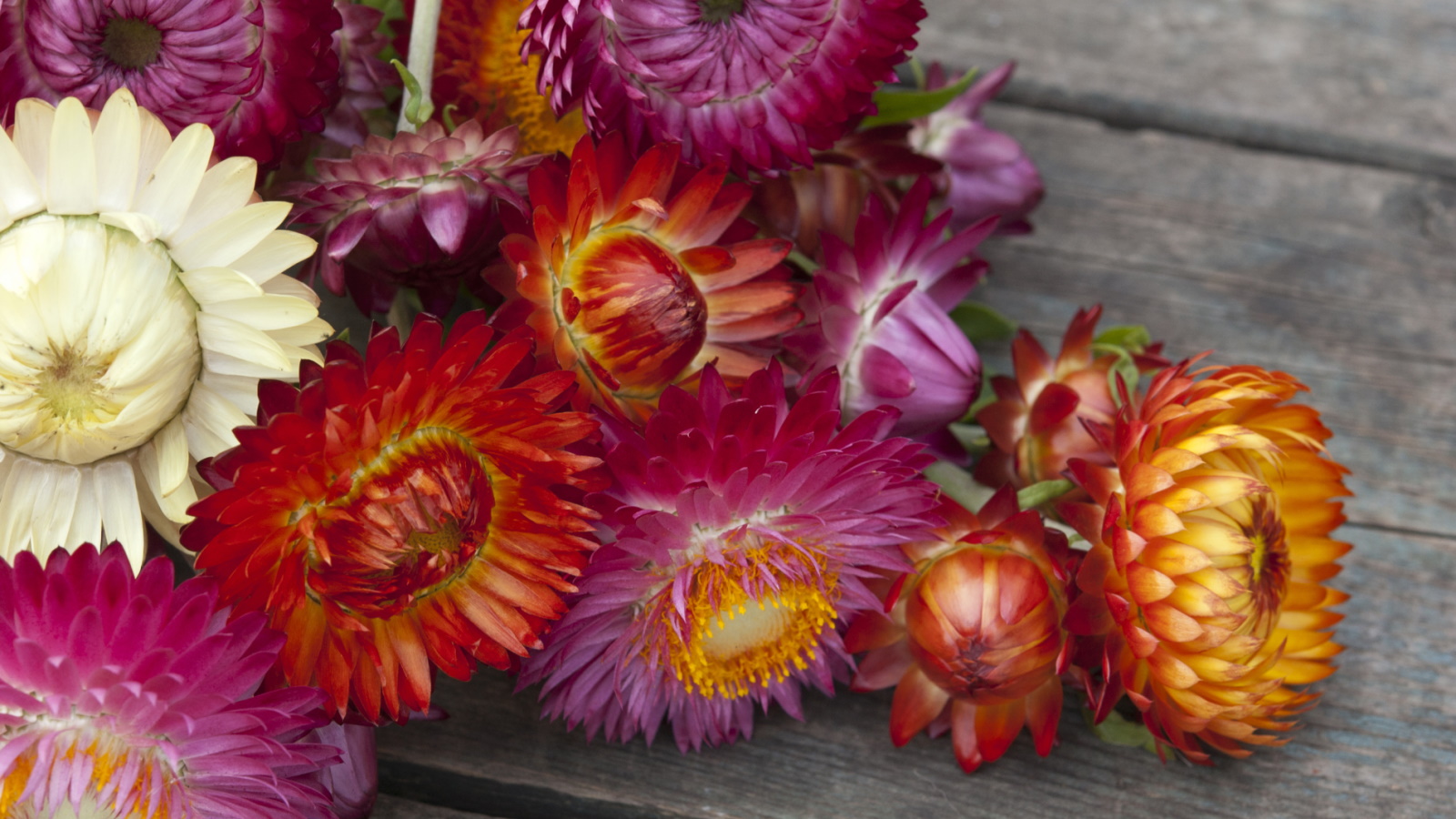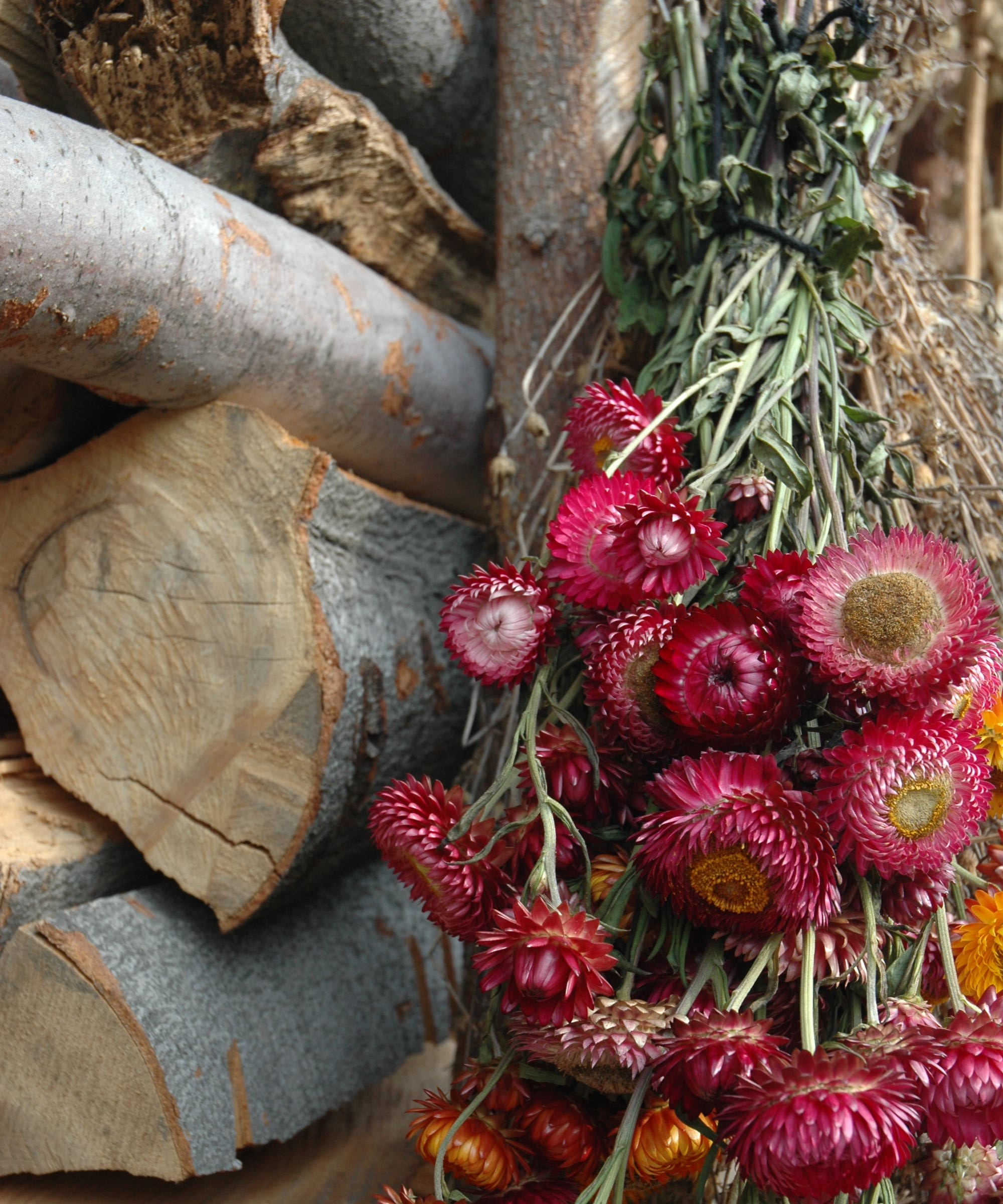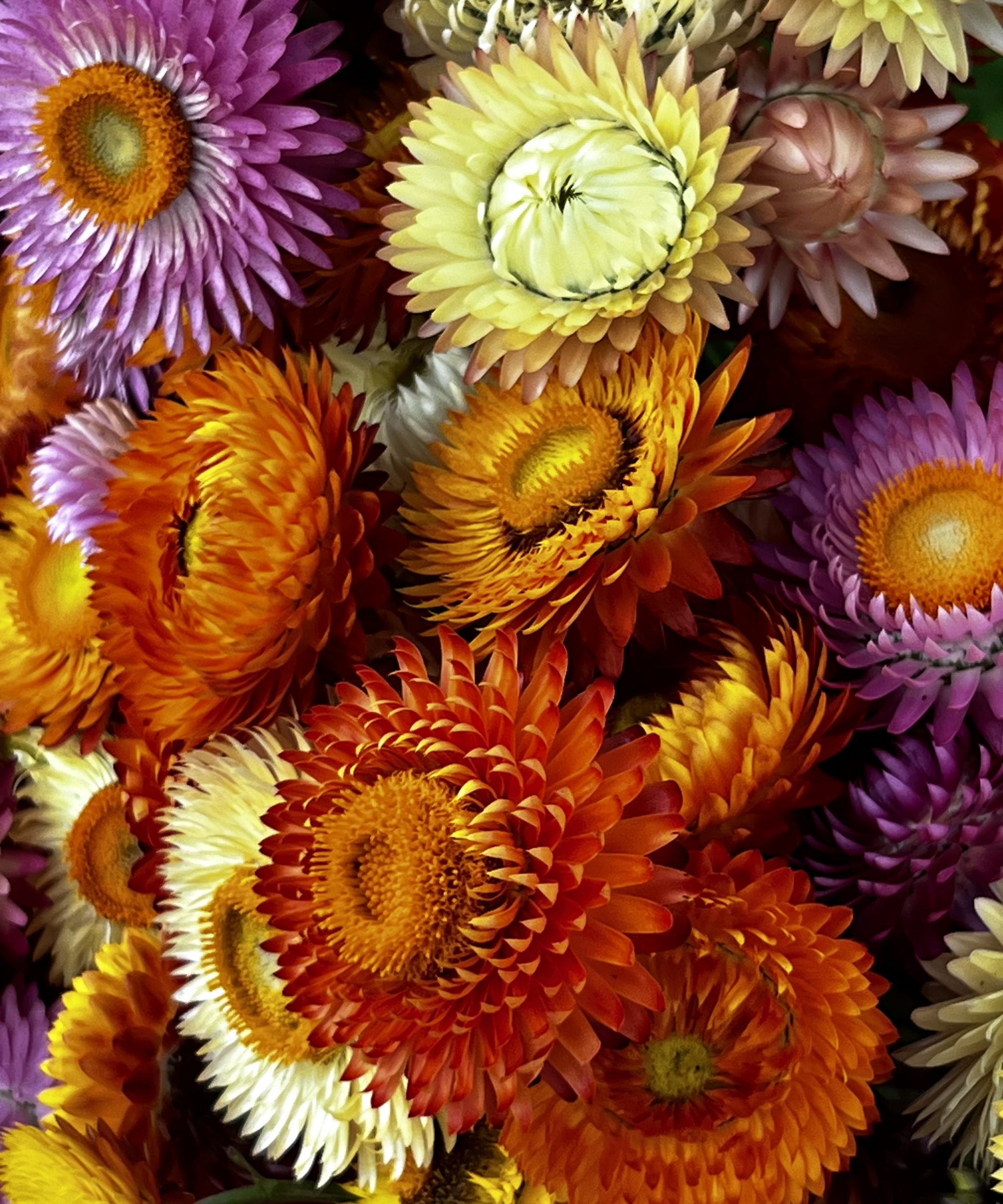How to dry strawflowers – my tried and tested methods for preserving these stunning blooms
Update your dried flower decor this fall with my expert advice on how to dry these everlasting jewels


If you are a lover of dried floral design, incorporating strawflowers into your collection is a must. Happily, even if you're just beginning to learn how to dry flowers, with these blooms it could not be simpler.
Learning how to dry strawflowers is made one step easier from the get-go because these shining, generous flowers give you a head start - they appear almost dried when they are growing. Also known as Xerochrysum bracteatum or Helichrysum, the layers of petals on their small flower heads are crispy to the touch, hence the name. I grow them from seed, which is super easy to do. You can browse straw flower seed varieties here on Etsy. If you are planning a cut flower garden, I highly recommend adding these to your patch.
Strawflowers, also known as everlasting flowers, are one the best blooms you can grow for drying because they hold their bright colors beautifully, and add incredible texture to a dried design. As a florist, I’ve grown and dried strawflowers to create autumnal wreaths, mantlepiece garlands and even used their heads to make strawflower baubles. There are so many wonderful ideas for decorating your home with dried flowers to consider. I've had huge success drying these bright, shimmering blooms - and I've also made my fair share of mistakes.
So, I'm sharing my failsafe methods to show you how to dry strawflowers with glittering results.

My 5 tried and tested steps for drying strawflowers
Follow these tips for a healthy crop of everlasting blooms this fall.

Find the right place to hang them
Once you’ve cut your strawflowers (or got them home from the florist), have a look through and strip off some of the lower foliage. This will allow the stems to dry quicker. I like to leave a little of the foliage on the stem around the top, as this creates great curvy shapes once dried, though it does get very crispy.
Separate them into small bundles of five to ten stems and tie them together tightly at the base using garden twine or string. Then you need to find somewhere fairly dark and dry to hang them.
Design expertise in your inbox – from inspiring decorating ideas and beautiful celebrity homes to practical gardening advice and shopping round-ups.
Try to hang them from a beam, or a clothes dryer would also work well. I’ve tried hanging them from picture rail hooks, but have found the air doesn’t circulate properly about the flowers closest to the wall. It left me with some stems going brown and moldy, which was not a good outcome. Once you’ve hung them up, leave them for three weeks to completely dry out.

Banish the humidity
It feels like an obvious point, but the space in which you dry your strawflowers must be free of humidity. I once dried some flowers leftover from a wedding in my shed - it has a wonderful beam across the ceiling and is a fairly dark space. Alas, this was a failure because my wooden shed was not watertight; the moisture in there meant that after a few months my stems were covered in mildew and completely unusable.
An airing cupboard, if large enough, or a dry basement would work really well. I found tying strawflowers to the bannister of my stairs was also a success, and can of course look pretty. Depending on how much space you have, you could also use a dehumidifier (like these ones available from Amazon) to help take moisture out of the air.

Ensure there is adequate air flow
If possible, try to keep some air flowing around your strawflower stems as they are drying. This stops them from getting too brittle, and I find it makes it easier to work with them afterwards.
If you don’t have a window, you could consider running a fan in the room for a few hours a day to circulate the air.

Wire the fresh flower heads
Another clever trick when drying strawflowers is to wire them. The benefit of doing this is that once the flower head is dry, the false wire stems will have much more flexibility than the more brittle strawflower stems. Wiring them makes it easier to add strawflowers into bouquets or table arrangements, and means fewer breakages.
To wire fresh strawflower heads, you’ll need to use 22 or 24 gauge floral wire, which you can buy on Amazon. Cut the strawflower head entirely off the stem, and then cut a length of wire approximately 25in long. Fold this in half, so you have a small loop at one end. Take the two open ends of wire, pinch them together and feed these through the strawflower head from top to bottom. Gently pull the wire through the head and stop when the loop can no longer be seen. Take care not to pull the wire right through the head as you’ll end up with an unusable strawflower. Remember to do this when the flowers are fresh; if you try once they are dried it simply won’t work as the strawflower heads will be too brittle.
If any heads do break off your strawflower stems once they’ve dried, don’t throw these floral jewels away. Keep them in a paper bag or a box and scatter them along the length of a dining table, or glue onto brown parcel labels to make dried flower tags.

Store them properly
Once your strawflowers are beautifully dried, it’s a really good idea to store them correctly to avoid any unwanted moisture getting to the flowers.
If you can leave them in the space you dried them - great. If not, consider a sealed but breathable container - even better if it’s stackable for smarter storage. They should be stored in a dry place and away from direct sunlight.

FAQs
When is the best time to harvest straw flowers for drying
For optimum dried flower results, you should harvest strawflowers when the heads are still partly closed. As your strawflowers dry they will continue to open, so if you cut stems when the heads are already fully open the petals will curl downwards and go to seed. They are much prettier as a dried flower when the heads stay partly closed.
How will I know when my straw flowers are dried enough?
If you leave them to dry for approximately three weeks and then touch the stems, you’ll be able to feel when they are fully dry. That’s when you know your strawflowers are ready. Just handle with care, as those stems can get very brittle once dried.
Once you're familiar with the steps of how to dry strawflowers, the same techniques can be used to dry many other varieties of cut flower, such as hydrangeas, amaranth or lavender. It's a wonderful way of prolonging the enjoyment of your garden-grown flowers, and provides you with a stylish decor update in the process.

Rachel is a gardening editor, floral designer, flower grower and gardener. Her journalism career began on Country Living magazine, sparking a love of container gardening and wild planting. After several years as editor of floral art magazine The Flower Arranger, Rachel became a floral designer and stylist, before joining Homes & Gardens in 2023. She writes and presents the brand's weekly gardening and floristry social series Petals & Roots. An expert in cut flowers, she is particularly interested in sustainable gardening methods and growing flowers and herbs for wellbeing. Last summer, she was invited to Singapore to learn about the nation state's ambitious plan to create a city in nature, discovering a world of tropical planting and visionary urban horticulture.